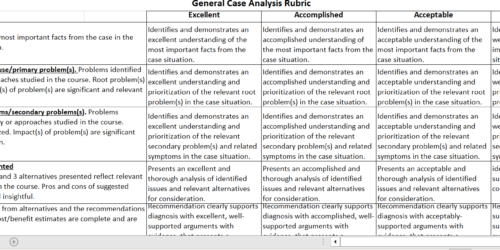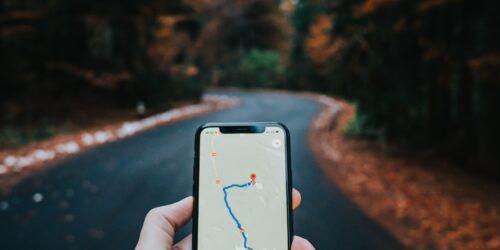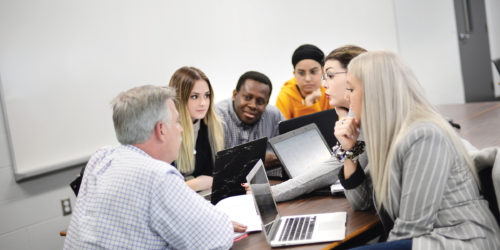
Use Mini-Scenarios to Talk to Students About AI
Active learning activities about generative artificial intelligence (AI) can support student AI literacy while clarifying the AI use expectations for your course. Customize any one of six mini-scenarios to discuss academic integrity and the appropriate and ethical AI use for learning tasks and assignments. Help students to practice ethical decision-making before these situations arise.
Show (Don’t Just Tell) About AI Use in Your Course
Scenario-based learning (SBL) is an instructional strategy that uses realistic scenarios to engage students actively in critical thinking and problem-solving (Microsoft, 2025). It allows students to apply theoretical knowledge to practical situations, encouraging ethical decision-making (Volpe, 2024). Scenarios can also help reinforce AI use expectations for course assignments (Teaching & Learning Resource Center, 2024). To learn more about setting AI permissions, see Statement of GenAI Use (for the optional use of AI in assessments).
Select the scenario that can be customized for your course, assessment, and AI permission level. Before asking students the decision-making discussion questions, ask students to say in their own words a) what is the stated permitted use of AI, b) how the student in the scenario violated the AI use guidelines, and c) who may be negatively impacted by their actions.
Also, be open and patient while introducing a scenario to your class, as students may be uncertain or hesitant to share their thoughts. By showing the scenario, reading it aloud, and providing time for quiet reflection or pair discussion, you can help make learning with scenarios accessible to all (Volpe, 2024).
AI-Generated Essay Submission Scenario
Assignment permission guidelines: Students must cite information obtained from AI. AI cannot be used to generate entire essays. Failing to cite and reference AI, or use AI to generate an entire essay, would be considered an academic integrity violation.
The course professor, Prof. Patel emphasizes the importance of original work to develop critical thinking skills and avoid bias in writing. However, Li Wei is struggling with time management and decides to use an AI tool to generate the entire essay. Prof. Patel notices that although Li Wei’s essay appears well-written, there are some troubling biases, omissions, and inaccuracies. Without any citations of AI use, Prof. Patel thinks Li Wei has put the incorrect and misleading information together on her own.
Decision-making discussion questions:
- Is Li Wei permitted to use AI to assist with research and write the essay in her own words?
- Why should Li Wei cite AI when she uses it to write an essay?
- How could Li Wei have managed her time better to avoid relying entirely on AI?
AI in Group Projects Scenario
Assignment permission guidelines: AI use is permitted with guided/limited use, such as generating ideas or outlines, but not for completing entire sections, which is an academic integrity violation.
A group project assignment requires students, in teams of four, to collaborate on a comprehensive report. The students of one group assign themselves to complete different sections of the report. One member, Aisha, is busy with her job, so she uses AI to complete her entire section. Aisha doesn’t tell her team, and no one checks her work. The group submits the report, and the professor, Prof. Chen, notices extreme inconsistencies in style and disjointed sections. Prof. Chen asks each group member to produce evidence showing how they developed their work with and without AI, but Aisha doesn’t have any.
Decision-making discussion questions:
- What could Aisha have done to get help instead of using AI to generate her entire section?
- What could this group have done that might have prevented this problem in the first place?
- How can the group ensure that the parameters of AI use are followed in future projects?
AI-Generated Quiz Answers Scenario
Course permission guidelines: AI use is not permitted. Any use of AI is an academic integrity violation.
Prof. Kim, emphasizes the importance of understanding physiology terminology and foundational concepts for the upcoming practice quiz. Prof. Kim reminds students that AI use is not permitted on the quiz, but Rajesh is anxious about doing poorly on the quiz, so he submits AI-generated answers. Rajesh happens to get most questions right, so the quiz does not give him good feedback on what terms and concepts he still needs to learn. Prof. Kim explains that the next assignment is a class presentation based on the quiz topics, including audience questions. Rajesh is now worried because he cannot use AI in front of the class to present and answer questions.
Decision-making discussion questions:
- What could happen if Rajesh uses AI tools without understanding the underlying concepts?
- How might Rajesh’s reliance on AI tools affect his ability to perform the class presentation?
- What strategies could Rajesh use to overcome his anxiety about the quiz and the presentation without resorting to AI-generated answers?
AI-Generated Homework Translation Scenario
Course permission guidelines: AI use is permitted with guided/limited use in class to explain concepts, but use of AI to translate is not permitted.
In class, Prof. Kaur encourages students to improve their language skills through practice using AI but discourages using AI to translate the homework that relates to conversational English. At home, Maria does not feel confident with her language skills, so she uses an AI translation tool to translate her answers instead of attempting to write it in English herself. Prof. Kaur notices that Maria’s homework is grammatically correct but was too formal and complex for using English in conversation. Prof. Kaur is concerned that Maria will struggle at the next program level without demonstrating her knowledge of English independent of AI.
Decision-making discussion questions:
- How could Maria use AI differently in her work if she is having difficulty with English writing?
- What could happen if Maria continues to use AI to translate her language skills homework?
- How can Maria balance using AI tools and practicing her English writing skills?
AI-Generated Research Data Scenario
Assignment permission guidelines: Students cannot use AI to generate data without verification and ethical consideration.
The course professor, Dr. Nguyen, emphasizes the importance of data integrity and ethical research practices for a final project that supports the needs of a local non-profit organization. Tiffany submits a research report with AI-generated data. Dr. Nguyen reviews the report and questions the validity of the data. Upon investigation, it is revealed that Tiffany did not verify the AI-generated data’s accuracy and did not explain how AI was used in the report. Dr. Nguyen compares the AI-generated data with known data sets and finds discrepancies. Tiffany’s recommendations based on invalid data will create significant problems for the local non-profit organization.
Decision-making discussion questions:
- What could be the negative consequences of Tiffany’s use of AI?
- What steps should Tiffany take to ensure data integrity in future data projects?
- What else could Tiffany do to ensure that her use of AI is transparent?
AI-Generated Cover Letter Scenario
Course permission guidelines: AI use is permitted with guided/limited use, such as ideas or outlines, but not for writing entire assignments.
For a career development class, Kaylen is asked to write a cover letter to apply for a part-time position at a local tech company. Prof. Lee’s emphasizes to the class the importance of personalizing cover letters to reflect individual experiences and skills. Kaylen decides to use an AI tool to generate their cover letter, hoping to save time and ensure a professional tone. Kaylen also heard that other students in the class were doing the same thing. Kaylen submits the AI-generated cover letter, which sounds polished but has no specific details, and the skills don’t match the position. Prof. Lee’s feedback to Kaylen is that it may be difficult for Kaylen to stand out to potential employers without specific details and appropriate skills.
Decision-making discussion questions:
- What did Kaylen not consider when using AI to generate their cover letter?
- How should Kaylen ensure their cover letter reflects their unique qualifications and stands out to employers?
- How can Kaylen verify that their cover letter does not sound too generic or similar to other AI-generated letters?
Download the Mini-Scenarios
Download an editable Word file to customize a scenario for your class.
References
Microsoft. (2025, February 1). MS Copilot (2024 version) [Large Language Model].
Teaching & Learning Resource Center. (2024). AI teaching strategies: Transparent assignment design. The Ohio State University.
Volpe, V.D. (2024). Scenario-based learning: An inclusive methodology. IOSR Journal of Research & Method in Education (IOSR-JRME), 14(6), 45-52.
AI Disclosure Statement
AI was used in the early part of brainstorming and outlining of this post. Specific content and formatting parameters were set for AI to develop the mini-scenarios. Following a first draft of the mini-scenarios generated by AI, the introduction was human written and the mini-scenarios and questions were human-revised many times, including review and feedback provided by T&L Consultants David Adi Baddoo, Launa Gauthier, Sherri Steele, and Jesslyn Wilkinson. The feature image was created by Mistral.






